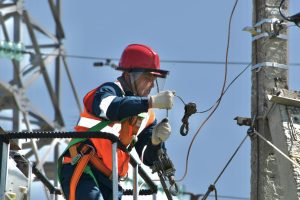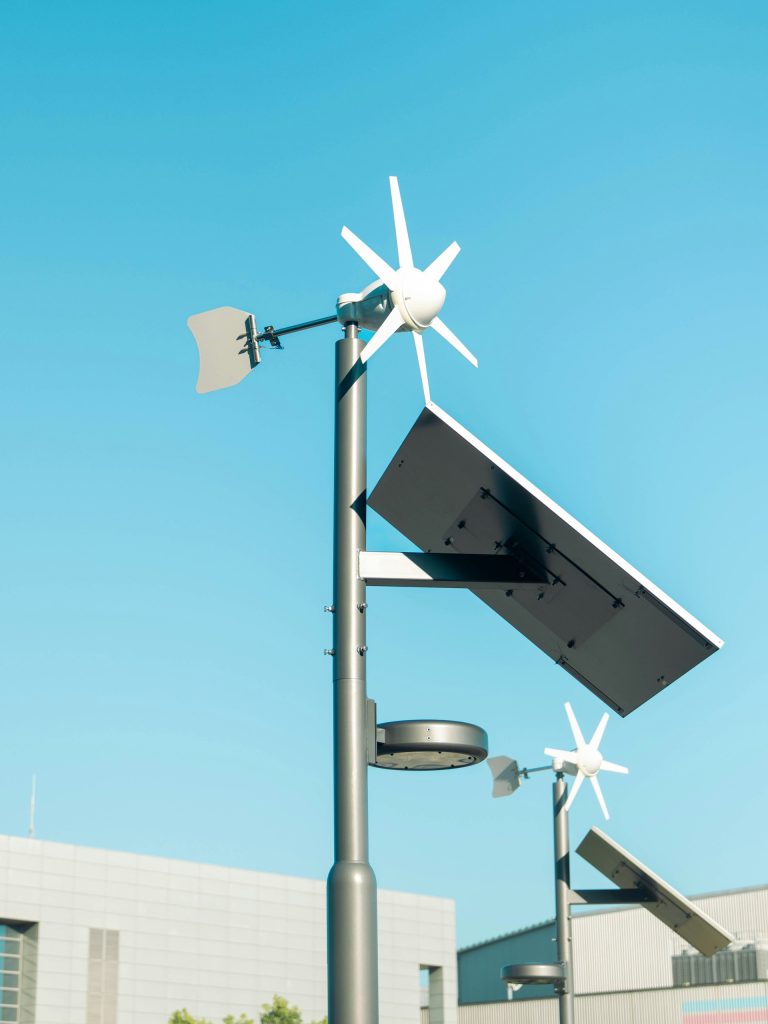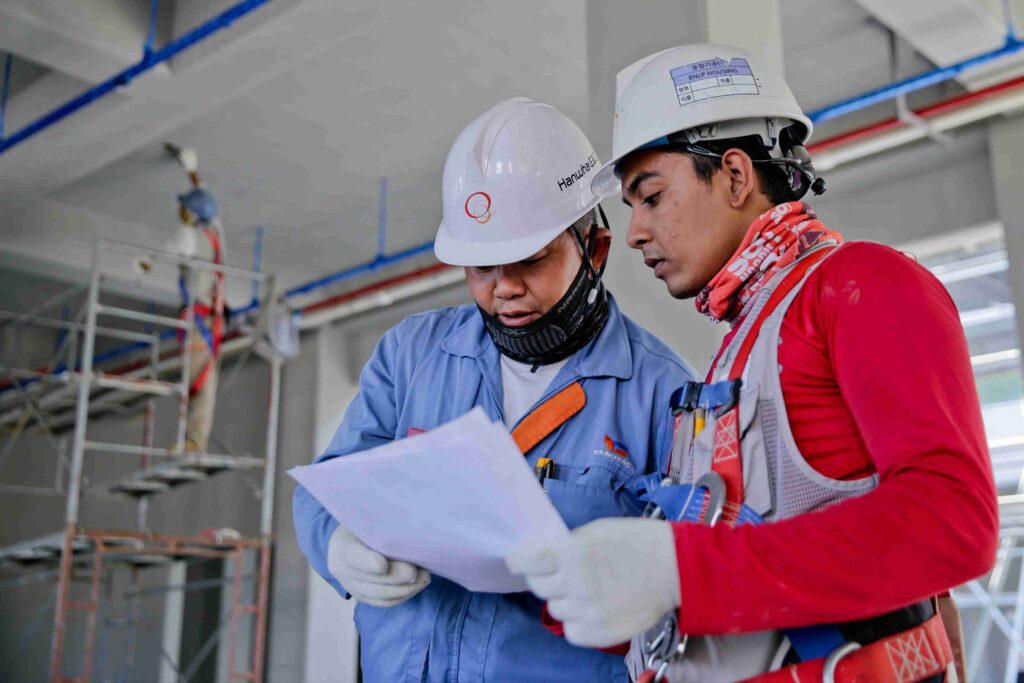 For individuals who are enthusiastic about renewable energy and technological difficulties, the US wind industry is going through a period of remarkable expansion that offers a plethora of fascinating career options. Becoming a wind turbine technician can be the ideal choice if you’re searching for a fulfilling career path with the possibility of ongoing learning and development. To help you have a rewarding career in the field of wind energy, this article examines the many phases of a wind turbine technician’s career path in the US.
For individuals who are enthusiastic about renewable energy and technological difficulties, the US wind industry is going through a period of remarkable expansion that offers a plethora of fascinating career options. Becoming a wind turbine technician can be the ideal choice if you’re searching for a fulfilling career path with the possibility of ongoing learning and development. To help you have a rewarding career in the field of wind energy, this article examines the many phases of a wind turbine technician’s career path in the US.
Read Also: Tech Jobs in the USA with Visa Sponsorship
Responsibilities in Wind Turbine Technician Jobs
Wind turbines are installed, maintained, and repaired by wind turbine technicians. Typical duties they do include:
-
Installation and Set-up
Electrical, mechanical, and hydraulic components of wind turbines are assembled, installed, and commissioned.
-
Maintenance
Regular maintenance is necessary for wind turbines, which includes examining and fixing gearboxes, bearings, blades, and other parts. It can be necessary to work at heights and climb towers.
-
Troubleshooting
Identify and resolve issues with wind turbines, including mechanical and electrical flaws.
-
Reporting
Keep thorough records of all repairs and maintenance, and record and report any problems or malfunctions with wind turbines.
Benefits of Wind Turbine Technician Jobs in the USA
With the increasing interest in renewable energy technology across a range of businesses, wind turbine technicians are in high demand. Techs can take on exciting, practical employment options in wind technology, which is a tough field. Technicians may also decide to pursue further supervisory or managerial roles and specialize in particular facets of wind energy technology if they have the necessary training and experience.
There is now a need for qualified wind turbine technicians. The U.S. Bureau of Labor Statistics (BLS) projects that there will be more than 2,000 job opportunities for wind turbine technicians on average each year. Additionally, according to the BLS, the median yearly salary for wind turbine technicians in the US was $61,770. In other words, half of them made more money than the other half. Keep in mind that a number of factors, such as experience, employer, demand, and local cost of living, have an impact on income.
Read Also: Owner-Operator Jobs That Can Pay Up To $370,000 in the USA
Are Wind Turbine Technician Jobs Travel-Demanding?
 Wind turbine professionals may need to travel to various locations to carry out routine maintenance, repairs, or inspections on turbines, depending on the location of the jobsite. Some technicians may be employed by a corporation that operates wind farms or projects across several states or nations, necessitating extensive travel. Some technicians, on the other hand, could operate mostly at one site or location and don’t have to travel far to fulfill their duties.
Wind turbine professionals may need to travel to various locations to carry out routine maintenance, repairs, or inspections on turbines, depending on the location of the jobsite. Some technicians may be employed by a corporation that operates wind farms or projects across several states or nations, necessitating extensive travel. Some technicians, on the other hand, could operate mostly at one site or location and don’t have to travel far to fulfill their duties.
In addition to being physically taxing and difficult, working as a wind turbine mechanic can be thrilling and fulfilling. In addition to knowing how to construct and maintain wind turbines and the equipment that goes with them, these specialists frequently have to work at high altitudes in a variety of weather situations. The challenges of their work are something that many wind turbine workers find enjoyable. In this manner, individuals are continuously challenged, have the opportunity to improve their abilities, and engage in labor that keeps them active.
Important Information Regarding State-by-State Wind Turbine Technician Salaries
With a projected 60% growth in employment over the next ten years, the field has an excellent career future. A competitive median yearly compensation of about $62,580 is supported by this high demand, making a career in skilled trades financially appealing. Entry-level salaries, which range from $49,000 to $55,000, have significantly increased. A technician with more than five years of experience should anticipate earning between $70,000 and $90,000 per year; highly specialized or lead roles may pay more than $100,000, particularly in high-demand locations or offshore wind.
The significant income from overtime hours and per diem payments for living expenses and travel when working remotely are sometimes not included in the cited basic compensation. These can increase a technician’s yearly take-home compensation by tens of thousands of dollars. States and regions have significantly different salaries. Locations in the traditional Midwest wind belt also offer competitive compensation, although coastal locations with a developing offshore wind industry typically offer higher earnings due to increasing demand and specialized employment. Although a technical certificate is frequently adequate for admission, companies place a great value on certain qualifications, such as Global Wind Organization modules and specialized technical abilities, which directly translate into increased earning potential and quicker career advancement.
Read Also: Radiology Tech Jobs Paying $124,000 Yearly in the USA
What is the National Average Wage range for Wind Turbine Technicians?
Wind turbine specialists typically make between $49,000 and $88,000 per year nationwide. It can, however, differ depending on a number of things. This analysis is based on current data from many sources, including the U.S. Bureau of Labor Statistics (BLS). As wind turbine technicians gain experience, their pay expectations rise dramatically, reflecting their increasing knowledge, accountability, and capacity for more difficult work. The normal compensation expectations for junior, mid-level, and senior positions in the United States are broken down as follows:
-
Junior/entry-level wind turbine technician: Between $49,000 $55,000 a year
Usually inexperienced in the field, these technicians frequently help more seasoned colleagues with routine maintenance, inspections, and simple repairs. They are acquiring practical experience and learning the ropes.
-
Mid-Level Wind Turbine Technician: Between $55,000 and $70,000 annually
A greater variety of autonomous duties, including troubleshooting, diagnostics, preventative maintenance, and more complicated repairs, can be carried out by mid-level technicians. They are well-versed in turbine systems and parts.
-
Senior/Experienced Wind Turbine Technician: $70,000 to $90,000+ a year
Highly qualified and experienced, senior technicians frequently serve as lead technicians, supervisors, or experts in specific fields (e.g., hydraulics, controls, composite blade repair, offshore operations). They train junior technicians, deal with the most complicated problems, and sometimes participate in project management and planning.
It is important to take into account the cost of living in a state, even if it offers a high nominal pay. A somewhat lower wage in a state with a lower cost of living may outweigh a larger salary in California. The average for all wind turbine technicians is typically represented by these numbers. Regardless of the state, highly skilled or experienced technicians will usually make more than the average. States with quickly expanding wind energy industries frequently have a greater need for technicians, which can raise pay. The wind energy industry in the United States is expanding at a rate never seen before. This graph shows how employment prospects for wind turbine technicians are expected to rise dramatically over the next ten years.
What is the Salary Range for Wind Turbine Technicians in the Various U.S. Regions?
The concentration of wind farms, the need for technicians, local energy regulations, and the general cost of living are the main factors that affect wind turbine technician pay, which can fluctuate greatly between U.S. regions. With 10,639 workers, wind turbine technicians made up just 2.6% of the entire wind energy employment in 2018. That number is expected to more than sevenfold increase to 76,181 by 2028, accounting for a noteworthy 14.3% of the total workforce. A general comparison of average earnings by region may be found here:
-
Northeast Area
Pay Range: $70,000 to $75,000
This area can provide attractive compensation, especially in states with robust renewable energy commitments or developing offshore wind sectors. Higher averages are frequently seen in states like Pennsylvania and New Jersey. There’s also a big presence in New York.
-
Midwest Area
Pay Range: $60,000 to $65,000
Numerous states in the Midwest have enormous wind farms, making it a powerhouse for onshore wind energy. Wind industries are robust in states like Illinois, Iowa, and North Dakota. The overall regional average may be marginally lower than the highest-paying states in other areas, even while some individual states, like North Dakota, have very competitive salaries.
-
The Southern Area
Pay Range: $55,000 to $65,000 in the South
The wind energy landscape in the Southern states is diverse. Texas is a significant player with a large wind power capacity, and compensation for technicians there is often competitive. The averages may be lower in other Southern states, particularly those with less advanced wind sectors.
-
Western Area
Pay Range: $65,000 to $75,000
States with established or expanding wind energy industries include California, Washington, Oregon, and Colorado. Both the Mountain West (Colorado, Wyoming) and the Pacific Northwest (Washington, Oregon) can offer competitive earnings.
Read Also: Flight Attendant Jobs in the USA
What Factors Influence Wind Turbine Technicians’ Salaries in the USA
The pay of a wind turbine technician is determined by a number of important criteria. Both existing and prospective technicians can increase their earning potential by being aware of these factors.
The main components are as follows:
-
Level of Experience
Even among profitable trades, this is perhaps the most important aspect. Technicians are paid more as their experience, efficiency, and problem-solving skills grow over time.
Entry-Level: Since they are frequently learning on the job and helping more seasoned technicians, they usually make the least.
Mid-Level: As technicians gain proficiency and the ability to operate independently, their pay noticeably increases after a few years of experience.
Senior/Experienced: The greatest incomes go to people with a lot of experience, specific abilities, and the capacity to manage intricate diagnoses and repairs or even lead teams.
-
Geographical Location
State Demand and legislation: Because there is a greater need for technicians in states with a high concentration of wind farms, ongoing wind energy development, and supporting renewable energy legislation, these states typically provide higher compensation.
Cost of Living: To offset rising costs, better salaries are sometimes found in places with greater living expenses. After accounting for living expenses, it’s crucial to take “real” income into account.
Wind farm proximity: Technicians who work directly on wind farms or in areas with a lot of wind projects will typically have more options and could earn more money than those who work in places with less infrastructure for wind energy.
-
Type and Size of Employers
Huge Utilities/Operators: Owners of huge wind farms or major utility firms frequently provide competitive pay, extensive benefit packages, and increased stability.
Turbine Manufacturers: Organizations such as Siemens Gamesa, GE Renewable Energy, and Vestas may pay well, particularly for specialists who specialize in their particular turbine models.
Independent Contractors and Service Providers: Compensation for these businesses might vary greatly. While some may be on the lower end, others may provide very competitive rates, particularly for specialized labor. Higher hourly earnings are occasionally available for contract labor, but there is less job stability.
Offshore vs. Onshore: Because of the greater risks, more difficult travel, and specialized abilities needed for marine environments, technicians working on offshore wind farms usually earn more money.
Advanced Degrees/Training: Although many positions call for a post-secondary non-degree degree, higher income and professional development can also be attained with advanced training or an associate’s degree in relevant subjects.
How Much Extra Do Associate Degree-Holding Wind Technicians Earn?
An associate’s degree can provide you with a competitive edge and eventually increase your earning potential, even if a postsecondary non-degree award is frequently the standard entry-level education for wind turbine technicians. Given the rising demand in this industry, this benefit will be more substantial. By 2028, there will be 307,790 wind technicians employed in the building and installation sector, with 251,109 onshore and 56,681 offshore. The Global Wind Energy Council reports that the operations and maintenance (O&M) sector requires an additional 224,623 technicians, comprising 205,123 onshore and 19,500 offshore.
-
Greater Initial Salary:
Employers frequently see an associate’s degree as a stronger foundational knowledge base, even if the BLS does not offer a particular income difference between those with an associate’s degree and those with a certificate. In comparison to someone with only a high school degree, on-the-job training, or a basic certificate, this may result in a somewhat higher starting income. It demonstrates a deeper comprehension of mechanical, hydraulic, and electrical systems.
-
Increased Earning Ceilings and Quicker Advancement:
An associate’s degree has the greatest influence on career advancement. Associate’s degree holders are frequently in a better position to work as supervisors, lead technicians, specialists, and in other management roles.
-
Enhanced Adaptability and Problem-Solving Skills:
More in-depth theoretical information is usually offered by associate’s degree programs, which can improve a technician’s problem-solving abilities and capacity to identify complicated problems outside of routine maintenance. Employers value them more because of their enhanced competence.
-
Official Acknowledgment:
An Associate’s degree offers official academic recognition of your abilities and expertise, which can be helpful when applying for jobs or negotiating compensation, especially with larger firms or those with more defined career paths, even though on-the-job training is still essential.
Read Also: $25,000 Vacancies in the US with Visa Sponsorship Openings
Conclusion
The wind energy industry is not just growing but thriving. There has never been a better time to jump into this exciting field. Whether you are just starting or looking to make a career change, becoming a wind turbine technician offers something truly special: a chance to earn a solid living while contributing to a cleaner, more sustainable future.





